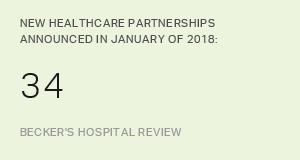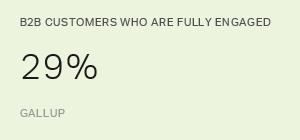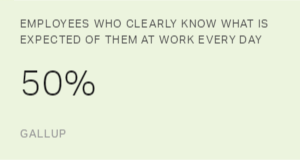For U.S. healthcare leaders, 2017 was a banner year for reshaping the industry landscape, with the highest number of M&A (merger and acquisition) transactions since 2000 and the greatest number of mega-deals ever recorded, according to a Kaufman Hall report.
In fact, 115 transactions were announced in 2017 across the industry -- 11 of which involved sellers with net revenues of $1 billion or greater.
All signs indicate that deals of this nature and scope will continue in 2018, with Becker's Hospital Review reporting that 34 new partnerships were announced in January.
To put size and scope in perspective, healthcare accounts for nearly one-fifth of the United States' current gross domestic product.
As the importance of scale and the demand for high quality at a low cost increase, healthcare organizations are pursuing acquisitions to achieve tangible market solutions.
To increase organizational strength and value, many healthcare leaders are pursuing both vertical and horizontal acquisitions that capitalize on shared functions, services, technologies, geographic footprints, specialties, customers, etc.
Despite these record-breaking efforts, many healthcare leaders have an Achilles' heel in M&A: In Gallup's experience, healthcare leaders tend to focus on alliance of financial capital -- and often overlook the opportunity for human capital unity. Factors such as "people" and "culture" rarely cause deals to unravel.
Sure, leaders consider labor and total rewards during the due diligence process. But there is value beyond employees' total rewards and labor costs -- including employees' knowledge capital, talent, experience and discretionary effort.
These people factors add tremendous complexity and wield enormous power with even run-of-the-mill deals. Further, behavioral and cultural complexities tend to creep in during M&A integration, delaying the benefits of a transaction.
Gallup has spent decades studying how the best organizations increase speed to value after M&A. We've found that HR leaders can reduce delays in realizing a "better together" organization by anticipating and mitigating common people barriers to harmony.
The following best practices can help HR leaders support the creation of value as well as accelerate leadership and cultural alignment.
What the Best HR Leaders Do Differently
1. Adopt a data-driven approach to efficiency.
Two obvious sources of HR value are cost-cutting and efficiency efforts, such as consolidating functions, teams, pay plans, benefits, technology systems and processes. But the best HR leaders don't just reduce headcount; they build analytics capabilities to aid in sustained efficiencies.
HR leaders should use data-driven strategies to serve as internal consultants and advisers --analyzing current processes and advising on talent-related needs for future processes. HR leaders should also provide data-driven insights to business leaders about how to leverage human capital to accelerate successful implementation of new operating models, strategies and processes.
One of the biggest challenges during M&A is creating clear expectations amidst disruptive change. World-class HR functions get ahead of this problem by appointing influential individuals and teams to clarify roles, responsibilities and who will own decision-making during the transition.
2. Focus on strengths to optimize team effectiveness.
HR functions can support integration success by helping employees collaborate more effectively through a strengths-based approach. After zeroing in on the right targets with clear expectations, managers and leaders can unleash employees' greatest performance by identifying their natural strengths and positioning them to use those strengths each day.
When employees don't understand or leverage one another's strengths, integration efforts are hindered due to miscommunication, ineffective knowledge transfer, clunky navigation, subpar collaboration and a lack of trust.
HR leaders can improve team collaboration and, ultimately, add value during M&A by serving as organizational effectiveness consultants who discover and celebrate what each individual brings to the table.
3. Hone your abilities to lead change.
Through decades of research, Gallup has identified evidence-based best practices for leading change in M&A. However, many healthcare leaders are new to M&A and need to learn how to apply their natural strengths to foster momentum and how to aim their leadership behaviors at accelerating integration and creating value.
To bridge that skills gap, the best HR leaders develop expertise in change-leadership analytics, advice and education. Then, after building those competencies, world-class HR leaders teach and equip leaders to engage employees during M&A. This exercise in prioritization enables HR leaders to better determine why, when and how to change through the people side of the business.
4. Identify and correct gaps in culture and purpose.
Merging cultures must harmonize decision-making processes, management styles, personnel policies and more. Even minor misalignments in purpose and culture can create roadblocks to successful integration.
HR leaders play an important role in anticipating performance-taxing culture clashes and helping leaders avoid them. Doing so requires in-depth, objective cultural measurements that explain cultural similarities and differences. With a data-driven perspective, leaders can understand barriers to integration and develop short- and long-term strategies for aligning employees under a shared culture.
5. Don't overlook your customers.
Busy with paperwork and integration pressures, leaders overseeing M&A can easily neglect a critical external focus: engaging new patients and customers. Organizations can pay dearly for disturbing the status quo with M&A when they don't have a plan for putting customers at ease and aligning them with the bigger picture.
Further, leaders need to understand their holistic positioning of value through their customers' eyes to gain additional market share.
Healthcare leaders should communicate with all customers -- from patients to trade and supply partners -- about the change and what they can expect. Leaders should also use customer analytics to understand customers' perceptions and give customers a voice. For example, how are customers responding to new brand messages?
The changes that come from mergers and acquisitions can create a lot of upheaval at your company. Gallup can help make it a smooth transition:
- Watch one of our healthcare webinars to learn how to lead your organization to greater success.
- Learn how Gallup can help you get better results by focusing on employee experiences.
- Use CliftonStrengths at your organization to get the best out of your people and your business.
Bailey Nelson contributed to the writing of this article.




